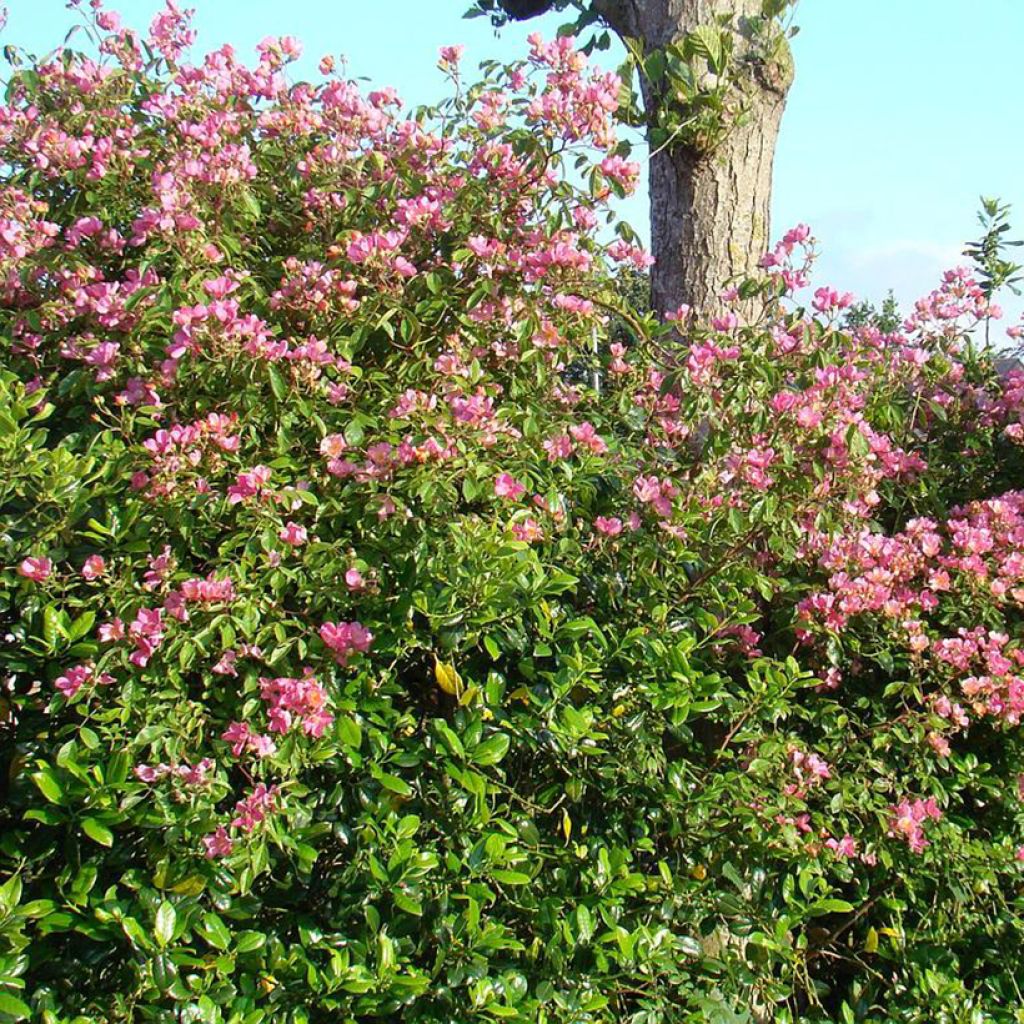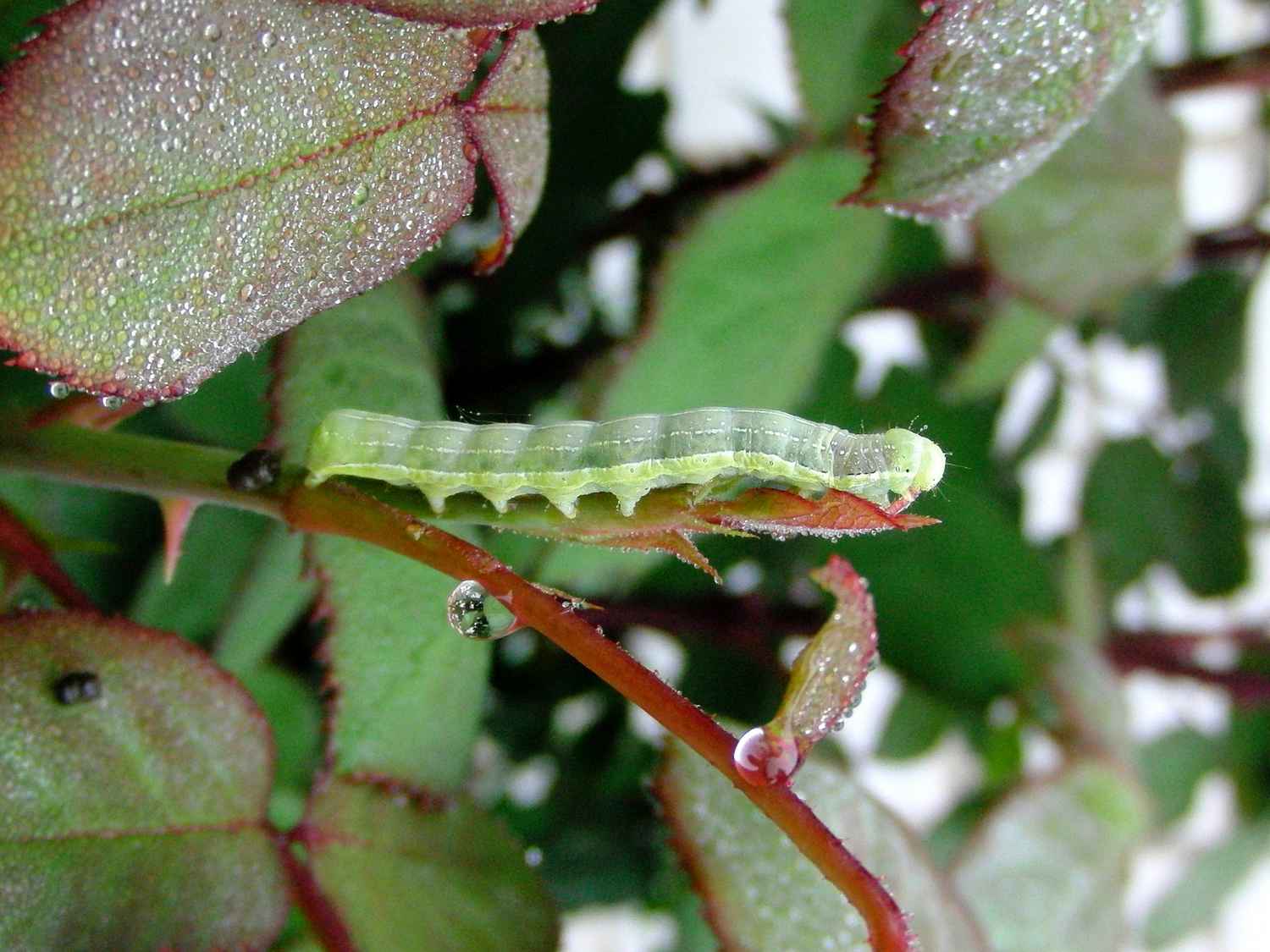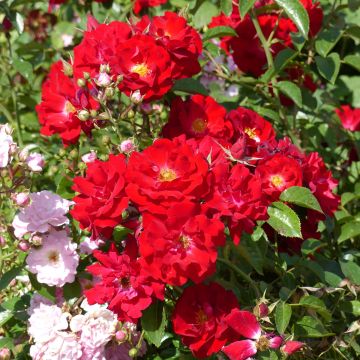

Rosier arbustif Plaisanterie 'Lentrimera'


Rosier arbustif Plaisanterie 'Lentrimera'


Rosier arbustif Plaisanterie 'Lentrimera'


Rosier arbustif Plaisanterie 'Lentrimera'


Rosier arbustif Plaisanterie 'Lentrimera'


Rosier arbustif Plaisanterie 'Lentrimera'


Rosier arbustif Plaisanterie 'Lentrimera'
Rosa Plaisanterie - Hybrid Musk Rose
Rosa x chinensis mutabilis Plaisanterie 'Lentrimera'
Hybrid Musk Rose
Purchased in spring 2024, it bloomed beautifully and thrived throughout the summer. A generous little bush, with flowers ranging from pink to salmon orange and a gentle, sweet fragrance, it's no joke, it's a cheerful rose bush that brightens up the garden!
Laurrelley, 08/12/2024
Special offer!
Receive a €20 voucher for any order over €90 (excluding delivery costs, credit notes, and plastic-free options)!
1- Add your favorite plants to your cart.
2- Once you have reached €90, confirm your order (you can even choose the delivery date!).
3- As soon as your order is shipped, you will receive an email containing your voucher code, valid for 3 months (90 days).
Your voucher is unique and can only be used once, for any order with a minimum value of €20, excluding delivery costs.
Can be combined with other current offers, non-divisible and non-refundable.
Home or relay delivery (depending on size and destination)
Schedule delivery date,
and select date in basket
We guarantee the quality of our plants for a full growing cycle, and will replace at our expense any plant that fails to recover under normal climatic and planting conditions.
Description
Rosa Plaisanterie is an astonishing hybrid of the Chinese Mutabilis rose and the climbing Trier rose, combining the qualities of its two parents. It stands out for its vigour, as well as its little flowers that change colour throughout the day. The slightly fragrant flowers bloom early in the season and again in August-September. The young leaves of this large rose are tinged with red, the foliage is delicate but very dense, and disease-free. It is sturdy, healthy, and ideal in a country setting. Moderately hardy (-12 to -15°C (10.4 to 5°F)) and drought-resistant, this hybrid is well-suited for southern gardens.
While modern roses are often criticized for their stiffness and weak disease resistance, Louis Lens's creations take a different approach, promoting simplicity, generosity, and robustness. This variety, Plaisanterie, introduced by L. Lens in 1996, is a descendant of the musk rose (Rosa (x)moschata), through the Trier rose. Indeed, the Trier rose is the ancestor of many musk roses, both old and modern. Similar to polyanthas and floribundas, roses in this family produce flowers clustered in clusters, but their colours are more refined and they have a more flexible and graceful shape. This Plaisanterie rose naturally forms a large, well-branched, bushy shrub. When pruned in a specific way, it can also be used as a climber. If left unpruned, it will reach a minimum height of 1.75m (6ft) and a spread of 1.50m (5ft). Its young foliage is reddish, and the mature leaves are divided into bright green leaflets with a slight sheen. It has deciduous foliage that falls in autumn. The first flowering starts in May (sometimes in April in mild climates) and can sporadically continue in waves until early July, depending on the climate, if the soil does not dry out too much. The second flush between the end of summer and the first frost is excellent. The flowers are gathered in large, slightly loose clusters and each small bud opens into a single flower with a diameter of 4cm (2in). The bud is orange and opens into a yellow corolla that quickly turns pink and then almost violet. The heart of the flower is wide open to bees and other pollinating insects with a light scent.
Plaisanterie has a natural appearance and is easy to grow, so will fit well in many gardens. It can be grown in most regions, but it will benefit from being planted in a sheltered position in gardens which are exposed to severe frost. This undemanding variety is a good choice for hot and dry climates. This fantastic and charming, rose deserves to be planted more often. It is perfect in a flowering hedge, behind perennial borders, in a large shrub bed, or climbing a structure. It pairs well with botanical roses and all other flowering shrubs. Consider planting it with viticella clematis, which is just as easy to grow. In Mediterranean gardens, cirrhosa clematis, which flowers in autumn and winter, will decorate its bare branches.
Rosa Plaisanterie - Hybrid Musk Rose in pictures






Plant habit
Flowering
Foliage
Botanical data
Rosa
x chinensis mutabilis
Plaisanterie 'Lentrimera'
Rosaceae
Hybrid Musk Rose
Cultivar or hybrid
Planting and care
Plant your 'Plaisanterie' rose bush in a sunny location in the north, or in partial shade in the south to protect its flowers from the strong midday rays. Its hardiness is rated at -12/-15°C (10.4/5°F) for a well-established subject. In slightly colder regions, we recommend planting it in a sheltered spot away from cold winds. Roses are fairly tolerant and will thrive in any garden as long as the soil is well-prepared and rich enough. This rose bush is naturally disease-resistant and will not need any specific care if the growing conditions are right. However, in very humid climates, it may require a preventive treatment in spring against fungal diseases. Once well-rooted, it will not need watering in summer if planted in deep soil.
To plant your rose bush, dig the soil well and add a base fertiliser, such as bonemeal, at the bottom of the planting hole. Water generously after planting to eliminate air pockets, then regularly for a few weeks to aid root growth. As 'Plaisanterie' is a perpetual flowering rose, it needs regular deadheading to promote new flower buds without exhausting the bush. Renew your rose bush by removing the oldest stems near the base, then balance the bush by pruning short and long branches. Remove dead wood and lightly thin out the centre of the bush. When pruning, choose an outward-facing bud and make a slanted cut just above it.
Roses are often marked or unsightly at the end of summer, but this is not a problem for their development. These marks are not harmful to the rose bush, it is a natural phenomenon.
Planting period
Intended location
Care
Planting & care advice
-
, onOrder confirmed
Reply from on Promesse de fleurs
Similar products
Haven't found what you were looking for?
Hardiness is the lowest winter temperature a plant can endure without suffering serious damage or even dying. However, hardiness is affected by location (a sheltered area, such as a patio), protection (winter cover) and soil type (hardiness is improved by well-drained soil).

Photo Sharing Terms & Conditions
In order to encourage gardeners to interact and share their experiences, Promesse de fleurs offers various media enabling content to be uploaded onto its Site - in particular via the ‘Photo sharing’ module.
The User agrees to refrain from:
- Posting any content that is illegal, prejudicial, insulting, racist, inciteful to hatred, revisionist, contrary to public decency, that infringes on privacy or on the privacy rights of third parties, in particular the publicity rights of persons and goods, intellectual property rights, or the right to privacy.
- Submitting content on behalf of a third party;
- Impersonate the identity of a third party and/or publish any personal information about a third party;
In general, the User undertakes to refrain from any unethical behaviour.
All Content (in particular text, comments, files, images, photos, videos, creative works, etc.), which may be subject to property or intellectual property rights, image or other private rights, shall remain the property of the User, subject to the limited rights granted by the terms of the licence granted by Promesse de fleurs as stated below. Users are at liberty to publish or not to publish such Content on the Site, notably via the ‘Photo Sharing’ facility, and accept that this Content shall be made public and freely accessible, notably on the Internet.
Users further acknowledge, undertake to have ,and guarantee that they hold all necessary rights and permissions to publish such material on the Site, in particular with regard to the legislation in force pertaining to any privacy, property, intellectual property, image, or contractual rights, or rights of any other nature. By publishing such Content on the Site, Users acknowledge accepting full liability as publishers of the Content within the meaning of the law, and grant Promesse de fleurs, free of charge, an inclusive, worldwide licence for the said Content for the entire duration of its publication, including all reproduction, representation, up/downloading, displaying, performing, transmission, and storage rights.
Users also grant permission for their name to be linked to the Content and accept that this link may not always be made available.
By engaging in posting material, Users consent to their Content becoming automatically accessible on the Internet, in particular on other sites and/or blogs and/or web pages of the Promesse de fleurs site, including in particular social pages and the Promesse de fleurs catalogue.
Users may secure the removal of entrusted content free of charge by issuing a simple request via our contact form.
The flowering period indicated on our website applies to countries and regions located in USDA zone 8 (France, the United Kingdom, Ireland, the Netherlands, etc.)
It will vary according to where you live:
- In zones 9 to 10 (Italy, Spain, Greece, etc.), flowering will occur about 2 to 4 weeks earlier.
- In zones 6 to 7 (Germany, Poland, Slovenia, and lower mountainous regions), flowering will be delayed by 2 to 3 weeks.
- In zone 5 (Central Europe, Scandinavia), blooming will be delayed by 3 to 5 weeks.
In temperate climates, pruning of spring-flowering shrubs (forsythia, spireas, etc.) should be done just after flowering.
Pruning of summer-flowering shrubs (Indian Lilac, Perovskia, etc.) can be done in winter or spring.
In cold regions as well as with frost-sensitive plants, avoid pruning too early when severe frosts may still occur.
The planting period indicated on our website applies to countries and regions located in USDA zone 8 (France, United Kingdom, Ireland, Netherlands).
It will vary according to where you live:
- In Mediterranean zones (Marseille, Madrid, Milan, etc.), autumn and winter are the best planting periods.
- In continental zones (Strasbourg, Munich, Vienna, etc.), delay planting by 2 to 3 weeks in spring and bring it forward by 2 to 4 weeks in autumn.
- In mountainous regions (the Alps, Pyrenees, Carpathians, etc.), it is best to plant in late spring (May-June) or late summer (August-September).
The harvesting period indicated on our website applies to countries and regions in USDA zone 8 (France, England, Ireland, the Netherlands).
In colder areas (Scandinavia, Poland, Austria...) fruit and vegetable harvests are likely to be delayed by 3-4 weeks.
In warmer areas (Italy, Spain, Greece, etc.), harvesting will probably take place earlier, depending on weather conditions.
The sowing periods indicated on our website apply to countries and regions within USDA Zone 8 (France, UK, Ireland, Netherlands).
In colder areas (Scandinavia, Poland, Austria...), delay any outdoor sowing by 3-4 weeks, or sow under glass.
In warmer climes (Italy, Spain, Greece, etc.), bring outdoor sowing forward by a few weeks.

















































